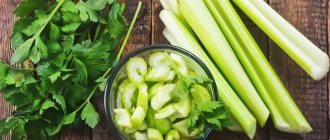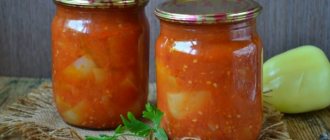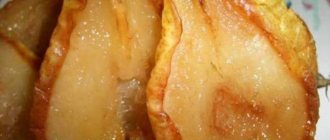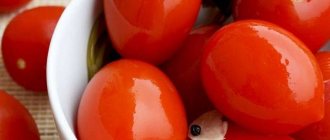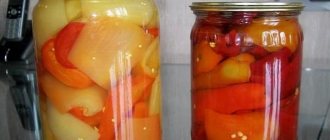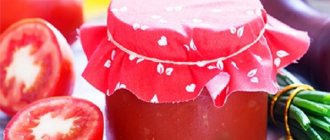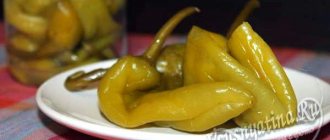What is daikon
Recipes for preparing this vegetable are completely different. Daikon is consumed fresh, dried and pickled. This vegetable is the fruit of selection. It is impossible to find it in the wild. Daikon is a type of radish. However, this vegetable has a more pleasant taste, crispy flesh and lack of bitterness.
Daikon was first developed in Japan. After some time, the root crop began to be grown in other countries of the world. At the moment, the vegetable is actively grown in the USA, Brazil and Western European countries.
The popularity of daikon can be easily explained by several factors:
- on average, a root crop weighs from 2 to 3 kg;
- all parts of the plant are edible, for example, the leaves can be used to make salad;
- long-term storage without loss of all beneficial properties;
- high productivity and unpretentiousness.
Useful properties of the product
Daikon provides us with the greatest amount of useful substances in the summer. But the benefits of radish can be preserved for the winter through preservation. The list of minerals and vitamins that make up daikon: phosphorus, copper, iron, iodine, potassium, calcium, selenium, as well as a full complex of B vitamins, invaluable for human cellular metabolism. This root vegetable differs from many other plant products in that it does not absorb harmful substances from the air and soil, including the accumulation of heavy metal salts.
Despite all the benefits of radish, doctors advise using it with caution, both fresh and canned, for people suffering from ulcers and gastritis or having other problems with the gastrointestinal tract. Eating sweet Japanese radish is a good way to cleanse the body, get rid of toxins and reduce bad cholesterol.
If you eat it regularly, you can do without pharmaceuticals. The potassium and calcium contained in radish easily cope with the removal of toxins and excess liquid.
With half a glass of juice a day, you can restore calm and maintain a good mood, as this drink strengthens the nervous system. It not only relieves aggression, but also helps to lose weight. 100 grams contain only 18 kilocalories.
Preparation
How to prepare daikon? Anyone can master pickled root vegetable recipes. The main thing is to maintain consistency. While the marinade is preparing, you can prepare the root vegetable. It is recommended to peel it and cut it into half circles or rings. It all depends on the size of the vegetable. Shredded daikon should be salted and then transferred to a colander. This will remove the bitterness from the root vegetable. After an hour, the salt must be washed off. Pieces of root vegetables should be dried and placed in a jar or container. Daikon should be poured with chilled marinade. The container should be tightly closed and shaken lightly. After this, the marinated vegetable should be placed in the refrigerator for 1 night. The finished product can be stored for 14 days.
Daikon salad with carrots and apple
This salad is called "brush". Eating it helps cleanse the intestines of stagnant segments. To prepare it, you need to choose only the freshest, juiciest and crispiest products. The taste and quality of the salad’s cleansing abilities depend on this factor.
Ingredients
Have to take:
- radish - 1 root vegetable;
- apple (Antonovka, maybe seven) - 150 -200 g;
- carrots - 1-2 pcs. (depending on size);
- sugar - 5 g;
- onion - 1 pc.;
- aromatic salad oil - 2-3 tbsp. l.;
- mustard (preferably traditional French, it is not so spicy) - 14 g;
- lemon juice - 5 mg;
- soy sauce -50-60 mg.
Step-by-step cooking process
The cooking process includes several stages:
- Peel the vegetables, rinse well and dry.
- Cut the vegetables into strips.
- Cut the peeled onion into half rings, add sugar and pour boiling water over everything. This will remove the bitterness from the onions.
- Wash the apple and grate without peeling it. Squeeze a little lemon juice on it to prevent it from darkening.
- Drain the onion, place it in a colander and let it drain.
- For dressing, mix mustard and aromatic oil.
- Pour the resulting dressing over the salad, mix well and place in the refrigerator for 10-15 minutes.
If you replace the oil and mustard dressing with sour cream or mayonnaise sauce, you will get a slightly different, but also very tasty salad. You can supplement the recipe with herbs, preferably parsley.
Daikon in Korean
How to prepare pickled daikon in Korean? The recipe is suitable for lovers of Asian cuisine. This is a very interesting and unusual snack. To prepare the root vegetable you will need:
- 600 g daikon.
- 50 ml of oil, preferably plant-based.
- 1 onion.
- Up to 5 cloves of garlic.
- 1 teaspoon coriander.
- 0.5 teaspoons of red pepper and salt.
- 1 tbsp. spoon of 9% table vinegar.
Daikon with fresh cucumber
Salads with daikon always put you in a healthy mood. I don’t want to make them “massive”, stuffed with calories, or layer them with mayonnaise. Continuing the theme of quality nutrition, we offer daikon with fresh cucumbers for consideration.
Ingredients:
- daikon – 1 root;
- fresh cucumbers – 1 kg;
- fresh ginger – 1-2 cm piece;
- hot chili pepper - to taste;
- mint - a small bunch;
- lemon;
- vegetable oil, salt, sugar, red wine vinegar.
Preparation:
- Chop the daikon into strips, and for the cucumbers, use a vegetable peeler and cut them into thin slices.
- Chop the chili, crush the mint leaves in your hands and tear into pieces.
- Peel and grate the ginger on a fine grater, take the zest from the lemon and mix with oil (4-5 tablespoons). Add a spoonful of vinegar, salt and sugar to taste.
- Combine daikon, cucumbers, chili and mint. Pour over the dressing, mix well, let sit for a little while.
Lemon zest is an excellent ingredient for dressings and as a salad ingredient.
It is cut with a special knife, but you can use a regular fine grater: it is important to take only the yellow upper part of the fruit, without the white “sub-skin”, because it is bitter
Cooking process
To prepare pickled daikon, peel the root vegetable and wash it well in running water. After this, the vegetable can be chopped. It is recommended to grate it to prepare Korean carrots. Garlic should be peeled and crushed using a press. If coriander is used in grains, then the spice should be ground in a mortar in combination with a small amount of salt. Add vinegar to the root vegetable. After this, you can add all the spices.
Now it’s time to prepare the aromatic oil. For this you will need a bow. It must be peeled and finely chopped. It is recommended to fry the onion in oil. Thanks to this, it will acquire a unique aroma. After this, pour the oil onto the garlic through a slotted spoon. Daikon is almost ready. All that remains is to mix.
Recipes for preparing daikon for the winter
You can prepare white radish for the winter with or without sterilization. Some recipes recommend various vegetables and spices as aromatic and flavor additives. If you are preparing daikon dishes according to the selected recipes for the winter for the first time, you must strictly follow the recommendations. Yes, and for the first time you need to prepare in small portions.
A simple recipe for daikon for the winter without sterilization
This is a classic recipe for daikon for the winter, which is rolled into jars. This is how the Easterners prepare the vegetable.
Recipe Ingredients:
- white radish – 0.5 kg;
- sugar – 75 g:
- coarse salt – 90 g;
- rice or table vinegar – 60 ml;
- paprika or turmeric - to taste.
Cooking rules:
- Chop the prepared daikon into cubes.
- Place Japanese radish in a sterile jar.
- Prepare a marinade from sugar, salt, spices and vinegar.
- After the filling has cooled, add it to the container with the vegetable.
- Roll up the jars with metal or screw lids and place them upside down.
- For pickling, place in a room with a temperature of 20-25 degrees for 7 days.
- Turn the jars over and store in a cool place.
Attention! Daikon pickled for the winter is ready for use in a week, but the rich taste appears after 1-2 months.
Korean daikon for winter (kimchi)
The word “kimchi” refers to pickled vegetables, in particular Chinese cabbage. This dish is especially popular in Korea.
The snack contains not only fiber, but also calcium and iron. These substances, according to local residents, can improve immunity.
To prepare canned daikon for the winter using this recipe, you will need to follow some recommendations:
- You will have to take care of purchasing sea salt in advance.
- For marinade, use only table vinegar.
- You need to wear rubber gloves when mixing kimchi.
- To speed up the process, jars with the preparation must be kept in a cold (not in the cold!) place.
Warning! If you don’t have table vinegar, you can take the essence and dilute it with water in a ratio of 1:16 or 1:20.
Ingredients:
- Chinese cabbage – 2 heads;
- bell pepper – 0.5 kg;
- daikon – 0.5 kg;
- garlic – 1 head;
- greens to taste – 1 bunch;
- hot red pepper – 40 g;
- ginger – 15 g;
- water – 2 l;
- salt – 2 tbsp. l. without top;
- sugar – 1.5 tsp.
Korean pickled kimchi with daikon for the winter will be ready for use in 3 days.
Recipe details:
- According to the recipe, Beijing cabbage for Korean salad with daikon for the winter must be cut into quarters, then into pieces, the width of which should not be more than 3-4 cm.
- Place the workpiece in a large enamel container, add salt and knead with your hands.
- Add cold water, place a plate on top and press down. In this state, the cabbage should stand for a day.
- Place the vegetable pieces in a colander and rinse under running water to remove excess salt.
- Prepare a sauce from chopped garlic, red pepper, ginger and a small amount of cold boiled water.
- Chop white radish and sweet pepper into strips, cut or tear the greens into pieces.
- Combine all ingredients, mix with hands.
- Fill the prepared jars, cover with lids and place in the refrigerator.
- To remove gases, the contents must be pierced every day.
- After 3 days you can try it, but kimchi will taste better after 7-10 days.
Korean pickled daikon according to this recipe turns out very tasty.
Daikon and carrot salad for the winter
To preserve daikon for the winter you will need:
- 1.8 kg white radish;
- 0.45 kg of onions;
- 0.8 kg carrots;
- 120 g garlic;
- 50 ml vegetable oil;
- 1.5 tbsp. l. salt;
- 1.5 tbsp. l. granulated sugar;
- 70 ml table vinegar.
Recipe Features:
- Peel the daikon and carrots and chop using a Korean salad grater.
- Cut the onion into thin half rings.
- Place the ingredients in a suitable container and add chopped garlic.
- Add salt, sugar, oil and vinegar. Mix the mixture thoroughly with your hands and set the container aside for an hour. During this time, the vegetables will release juice.
- Mix the salad again and place on the stove to heat.
- After 15 minutes, transfer the hot preparation into sterile jars and roll up.
- Put the container with daikon and carrots under the fur coat for a day.
- Store in the refrigerator in winter.
Cabbage with daikon for the winter and sweet pepper
Korean-style daikon with carrots for the winter will be ready in 2-3 days.
Ingredients for rolling into a 1 liter jar:
- 1 kg of white cabbage;
- 100 g daikon;
- 1/3 tsp. citric acid;
- 100 g carrots;
- 100 g sweet pepper;
- 30 g salt;
- 25 g granulated sugar.
Attention! Spices are added to taste. Delicious with basil, dill, dried celery or a mixture of peppers.
Recipe details:
- Peel the daikon, sprinkle with salt and wait 30 minutes to remove the bitterness. Then wash the vegetable under running water and dry with a napkin.
- Peel the juicy cabbage from the outer leaves and chop into medium-sized strips.
- Place the white vegetable in a bowl, grind with a little salt and set aside for 10 minutes.
- To chop the radish, use a regular coarse grater.
- Add daikon to cabbage.
- Wash the pepper, remove the seeds with white partitions. Cut into 2 parts, then into strips.
- Place the peppers in a bowl with vegetables.
- Season the vegetable mass with seasoning of your choice, citric acid, salt and sugar.
- Mash the mixture with your hands to release the juice.
- After this, loosely transfer the salad from the basin into clean steamed jars, cover with lids and place in a warm place. Many housewives place fermentation containers next to heating radiators.
- After 24 hours, stir the contents to remove gases and compact.
- Send for fermentation again for 1-2 days.
After this, screw on the lids and store the snack in the refrigerator. In another room it may become acidic.
A salad of daikon, cabbage and sweet pepper prepared according to the recipe for the winter is an excellent addition to main courses. If desired, you can add vegetable oil and green onions.
Japanese pickled daikon for the winter
In Japan, it is customary to pickle daikon for the winter; salad is the most favorite dish. Monks started preparing the vegetable back in the 16th century.
Pickling white radish is not difficult, but the process itself takes a long time.
According to the recipe, you need to prepare the main products:
- radish root - as needed;
- fine salt and brown sugar - to taste;
- red hot pepper - to taste.
As an additive you need to use:
- rice bran;
- seaweed;
- green radish tops.
Cooking rules:
- Washed root vegetables can be placed in the sun for 4-6 weeks to dry.
- Now the daikon can be pickled. Cut the root vegetables into cubes and place in a large container. Mix them with pepper, rice flakes, daikon and seaweed leaves.
- Add salt, sugar, mix gently. To ferment, cover the root vegetables with a plate and place pressure on top.
- Place the dishes in the refrigerator.
Important! If pickling is carried out according to the rules, then the vegetable pickled for the winter will acquire a yellowish tint.
Korean pickled daikon
To make daikon preparations for the winter, the recipe will require:
- 2 daikon roots;
- 4 tbsp. l. red hot pepper flakes;
- 2 tbsp. l. fresh ground garlic;
- 60 g coarse salt;
- 2 tsp. anchovies;
- 2 tbsp. l. grated ginger;
- 1 tbsp. l. sesame;
- 1 tbsp. l. fish sauce.
First, to prepare daikon in Korean, if you use this recipe, you need to make yangneom or Korean adjika. For this:
- Hot red pepper flakes need to be steamed with hot water (not bubbling boiling water!).
- The mass should resemble thick sour cream.
- Mix with garlic, 1 tbsp. l. fish sauce and anchovies. Knead thoroughly.
- Set aside the container with the dressing for 24 hours to infuse. Better in the refrigerator.
Recipe Features:
- On the second day, wash and peel the dried white radish and cut into small cubes, about 2-2.5 cm.
- Add salt, mix with your hands and wait for an hour until the juice appears, in which the natural bitterness of the vegetable dissolves.
- Rinse under running water, dry thoroughly with a cloth.
- Combine daikon with yang, ginger, sesame. Mix the mass well. You need to wear rubber gloves to avoid burning your hands.
- Place the vegetable back into the fermentation bowl and place the weight on top.
- Leave the dishes in the room for 1-3 days. While the daikon is fermenting, the juice that is released will gradually cover it.
- After another 2 days, cover the container with a lid and put it in the refrigerator.
- You can eat Japanese marinated daikon within a week.
- The snack should be stored in the refrigerator in winter for up to 4 months. It is best to transfer the radishes into jars after fermentation is complete for convenience.
Attention! The longer the snack sits, the richer the taste becomes.
Recipe Features
To make Korean daikon more original, you can add a natural yellow or green dye to it. The result is a savory and spicy appetizer that is ideal as a side dish for fish and meat dishes. It is worth noting that daikon prepared in this way can be used to make sandwiches with ham or sausages.
The recipe is also suitable for cooking carrots and beets. If you put vegetables prepared in this way on one dish, you will get an original three-color salad.
Step-by-step recipe with photos
By and large, this appetizer is prepared like Korean carrots, but daikon is used instead of carrots. Korean pickled daikon turns out to be more tender and juicy, and also does not have the sweetish taste characteristic of carrots. Instead of vinegar in such recipes, I prefer to use lemon juice, it is not so harsh, but I add a little more of it than vinegar.
It turns out quite well, by the way, if you radically change the recipe and instead of garlic add 100% asafoetida (about a third of a teaspoon). This turns out to be no less piquant, but not as aggressive, than with garlic, although garlic in such recipes is the basis of taste.
So, the daikon needs to be washed, peeled and grated on a Korean carrot grater. Choose a daikon that is smooth, without chips, and preferably not very large in size. Large radishes often have a loose core that is difficult to grate.
Add salt, sugar, Korean carrot seasoning and peeled, finely grated garlic.
In a small bowl, heat vegetable oil with turmeric and ground black pepper. Pour the aromatic hot oil over the garlic. Add lemon juice.
Thoroughly stir the almost finished Korean pickled daikon until it is evenly colored yellow from the turmeric. Taste - you may need to add salt, sugar, lemon juice.
Leave the Korean daikon to marinate for several hours in the refrigerator. You can stir it periodically so that the process proceeds evenly.
Pickled daikon is best served chilled.
Aimkuk
- 467 Recipes
- 57
Subscribers - 58
Photo reports collected
Subscribe to the author
Aimkuk
Did you like the recipe? Tell the author Thank you! Or rate it differently...
Aimkuk
Aimkuk
Features of product selection
If the root crop weighs more than 500 grams, then the amount of other components should be increased proportionally. If you don’t have rice white vinegar, you can replace it with regular table vinegar. However, the concentration of this substance should be lower and be no more than 3.5%. It is worth considering that table vinegar tastes a little sharper than rice vinegar. That is why it is recommended to dilute it. You should not use grape or apple cider vinegar to prepare daikon, as these substances have the aftertaste of the original raw material.
As for soy sauce, it should be classic. You should not use the component with various additives, for example, mushrooms. The water should be boiled and cooled to room temperature.
How to pickle daikon
There are many recipes for pickling daikon for the winter, and different Asian countries have their own national variations.
Helpful Tips:
- To preserve for the winter, it is necessary to take fresh root vegetables without damage. Vegetables that have been sitting for a long time are not suitable, as they simply fall apart during harvesting.
- Before pickling or fermenting for the winter, the root crop is washed, changing the water several times. The daikon, cleared of soil, is laid out on a cloth to drain.
- Depending on the recipe recommendations, the vegetable can be cut into cubes or circles. It is advisable to use a special grater.
- Daikon has a specific bitterness that needs to be removed before storing it for the winter. To do this, sprinkle the vegetables with salt and leave for several hours.
- Marinate daikon with rice or white table vinegar 3%. But it is better to avoid grape or apple cider vinegar, since the appetizer will partially lose its aroma and will acquire the taste of a marinade additive.
- If daikon is hot pickled for the winter, then you need to add granulated sugar. In cold canning, sugar is not necessary, but a lot of salt is required.
Advice! Use gloves when stirring vegetables, especially if recipes contain spicy seasonings.
Cooking steps
So, how to make pickled daikon in Japanese. The recipe is classic. First you need to prepare all the products. Root vegetables should be peeled, washed thoroughly and cut into rings or cubes. It all depends on what the pickled daikon will be used for. You can chop the root vegetable using a shredder or knife. The radish should be placed in a deep container, sprinkling each layer with salt.
After 15 minutes, it is recommended to drain the brine. After this, the root vegetable should be sprinkled with sugar in the same way as salt. After 15 minutes, drain the juice. Now pour soy sauce, white rice vinegar and boiled water into the bowl with the prepared daikon. After this, the container with the root vegetable should be closed with a lid or covered with plastic wrap. After a day, the daikon will be ready.
Benefits for the body
Daikon is a root vegetable similar to radish. You can write books about the benefits of this vegetable:
- Daikon contains the entire list of B vitamins (from B1 to B12). They are necessary for every person because they play a huge role in the processes of cellular metabolism. In addition, daikon is rich in vitamins such as C, A, PP, E.
- Next are minerals. These include phosphorus, selenium, copper, iodine, iron, calcium, potassium and even manganese. Daikon also contains pectin, fiber, antioxidants, carotene and enzymes.
The main difference from other vegetables is that this radish does not have the ability to absorb any harmful substances, including heavy metal salts from the soil. Thus, daikon is invaluable for the human body; it has a positive effect on almost the entire body.
Benefits of using daikon:
- cleansing the body. Instead of buying expensive laxatives or diuretics at pharmacies, you just need to regularly eat this product. The result is the same, but there are more benefits, and without side effects. Potassium and calcium (especially potassium salts), which are in its composition, easily and accurately remove toxins and excess liquid;
- increasing immunity. The above number of vitamins speaks for itself. In addition, the internal organs are perfectly cleansed from microbes by the phytoncides and protein components of this vegetable;
- cleanses and protects the liver and kidneys. In order to remove small stones, one glass of daikon juice per day is enough;
- restores the functioning of the nervous system and gives peace and good mood. ½ glass of radish juice is enough to cope with increased aggression;
- promotes weight loss. Since this product contains a lot of vitamins, there is simply no room for fat. For every 100 g there are only 18 kcal. In addition, radishes remove everything unnecessary from the body (toxins, cholesterol);
- cures some skin diseases. If you do not drink the juice of this radish, but rub it into the skin, you can get rid of acne, boils, age spots and even freckles;
- improves hair condition. By rubbing daikon juice into the scalp, you can ensure healthy hair and natural shine. Your hair will be beautiful and strong.
The product has no contraindications as such. However, this does not mean that excessiveness makes sense.
Video: beneficial properties of daikon
All sources agree that daikon is a hybrid. This means that it does not grow in the wild. This vegetable is native to Japan, although nowadays it is grown in many Western European countries, as well as in Brazil and the USA.
Even if you're not a fan of oriental cuisine, this root vegetable has many culinary and gardening benefits:
the plant is not capricious, it does not require special conditions for growth; the fruits are quite early ripening - the harvest can be harvested 1.5 months after planting; large fruits (the weight of one vegetable can reach 3 kg); easy to store - no special conditions required, does not lose its beneficial qualities over time.
The only condition for harvesting is the absence of precipitation, and in the summer there are enough dry days. No special tools are needed - it is pulled out of the ground by the tops.
Fresh daikon must be stored in the refrigerator or cool room, for which a regular cellar will do. In such conditions it can remain fresh for up to 3 months.
What is it suitable for?
This pickled daikon can be used as an addition to main courses or as a snack. Korean, Japanese and Chinese cuisines often use a variety of vegetables pickled in this way.
When you open a jar of daikon, you can hear a specific smell. However, the taste of such a snack is mild and without bitterness. The root vegetable turns out to be refreshing and stimulates the appetite. At the same time, the snack is not sour, not spicy and crispy. Pickled daikon can be stored for quite a long time.
Cooking process
It is recommended to peel, wash and cut daikon into long bars. The jar should be steamed. Carefully place the root vegetable into the prepared container, placing its pieces vertically.
After this, you can prepare the marinade. To do this, pour water into the pan, add salt, sugar and vinegar. When the contents are hot, add saffron. The finished marinade should be cooled and then poured into a jar with daikon. The container should be tightly closed and left warm for 7 days. After this, the product can be placed in the refrigerator for further storage.
What consumers say
Evgeniya
I go on a fasting diet several times a year. I try to eat only vegetables and the right foods. And recently my aunt brought me a very interesting vegetable - daikon. I've never encountered him before. But after the root vegetable was already in my refrigerator, I had to read what it is and what it is eaten with.
I read a lot of information about the benefits and harms of daikon radish for human health. I learned how it is used in various fields, and first of all, in food. I will say right away that the taste is something between a radish and a radish.
A very interesting and unusual combination, especially when my menu already contains boring vegetables and boiled meat. What pleased me most was that per hundred grams of product there are only 19 calories.
Now I often eat this root vegetable as a snack, and it is a great hunger suppressant because it contains fiber. Losing weight with it is easy and simple, I advise it to all girls who suffer on diets.
Zhanna
This year I decided to start gardening and grow something interesting. I read about daikon radishes on the Internet and learned that they have a lot of benefits and a little harm. I realized that our family needed such a boost of vitamins, so I bought some seeds and planted them. The daikon grew to glory.
Large root vegetables without any blemishes on the skin, just like in the picture. By the way, planting it is very simple, just like a regular radish. It grew quickly, in about a month and a half to two months I had already reaped a huge harvest.
Also, to my great joy, it turned out that this vegetable can be used to make an excellent cough remedy. I grated the daikon and poured it with honey. It helps children literally within a couple of days of taking it.
Should be stored in a cool place. I put it in a box and put it in the cellar. It can stand quietly for three or four months. I don’t know the recommended storage times, because we don’t store it for a long time. I recommend it to everyone, because daikon contains a lot of vitamins that support the immune system and help the body cope with many diseases.
Galina
Once upon a time I read in a newspaper article about the benefits and harms of the daikon vegetable. But somehow the opportunity never came up to buy and try. My friends said that this is an ordinary radish, and there is nothing special about it. But I really wanted to. And at the market I saw this miracle from a Korean saleswoman.
She assured me that I had never tasted such deliciousness. She didn’t talk about the benefits or harm, since she probably doesn’t know about it herself. In general, I bought it and brought it home. I decided to make a salad. I grated daikon and carrots, added a little salt, poured olive oil, added a pinch of sugar and stirred.
After I tried the first spoon, I couldn’t stop. Girls, I would never have thought that an ordinary root vegetable could be so tasty and provide so many benefits.
By the way, I am not in danger of any harm, since I have no contraindications. Now my life cannot be done without this product. She taught the whole family to eat it. Moreover, when daikon has such wonderful properties, it has no price.
